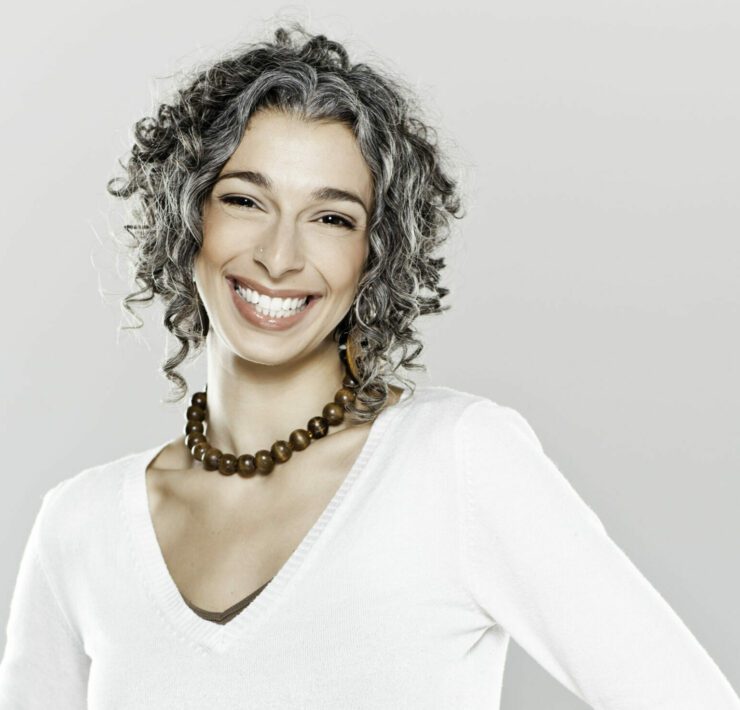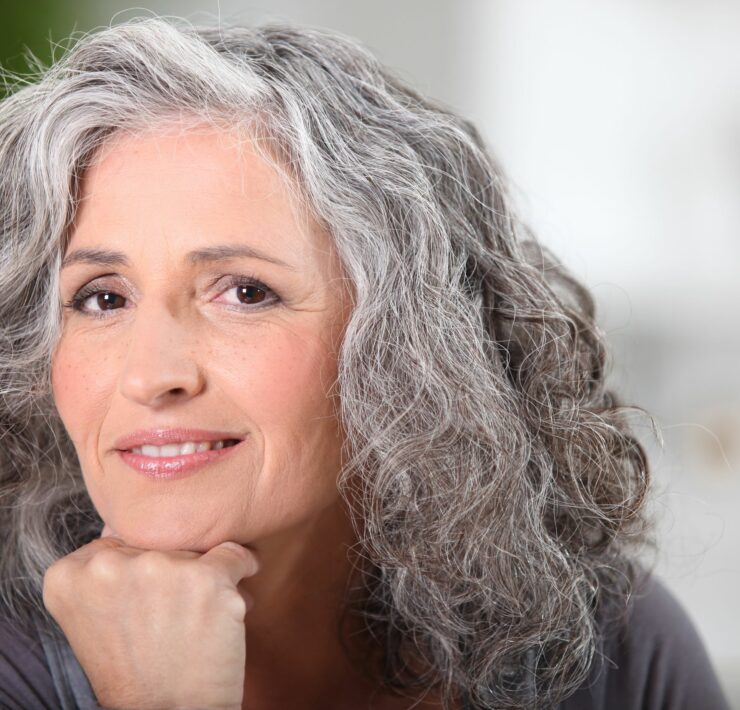
Both Hair Gloss and Hair Glaze fall under the “Temporary Synthetic Hair Dye/Color Category” but are different in their composition and effect. Both products add color highlights, remove yellowish hues, and cover up small amounts (<15%) of graying hair. With both products, the dye forms a weak bond to the hair, which means it only remains in place for a short period of time and is easily removed with shampoo. These products generally contain a combination of 2 to 5 coloring ingredients to achieve the desired hue. The final product is marketed as a spray, lotion, foam, lacquer, or shampoo, and easily stains the hair and scalp.
While hair glosses penetrate the hair shaft and seal the cuticles, hair glazes simply coat the strands and lie on the surface. Hair gloss usually has ammonia or peroxide in its formula. The ammonia/peroxide gives it the ability to lift the cuticle and penetrate the hair shaft, depositing color pigments inside. Hair glossing treatments can change hair color by a full shade with effects lasting about 4-6 weeks.
Glosses
Hair gloss will have a tonal effect, as opposed to creating one solid opaque color on gray hair, making your hair super shiny and smooth according to Paul Cucinello of Chris Chase Salon in New York City. Sally Hershberger colorist Dana Ionato recommends that this be done at a salon for all-over gray, however, for root coverage, a semi-permanent gloss at home will work. “That’ll be more of a long-term solution than the color sprays on the market.”
Glosses on gray hair texture can create more shine.
Glazes
Hair glaze is a temporary shine treatment that does not contain ammonia or peroxide and has no ability to open the cuticle. Hair glazes instead gently coat the hair strands with shine or/and semi-permanent color. As a result, the effects are more short-lived compared to hair gloss and last only a week or two. On the plus side, hair glazes do not damage the hair as compared to hair glosses.
The main active ingredients in glazing products are ceramides (unsaturated fatty acids that protect the strands from external influences) and moisturizing components. The principal action of hair glaze is similar to hair lamination. The difference is that the hair is not covered with a thin film of “laminate” but instead is filled with ceramides that seal the cuticle layer and treat the hair. The glaze is very acidic, which aids in sealing the hair cuticle. The result is a smooth hair texture that reflects light and feels much softer.
There are two types of hair glaze: Clear and Tinted. Clear glazes soften strands, enhance hairs’ natural tone, reduce frizz, and restore shine to dull hair. Color-reviving glazes contain color pigments added to restore and maintain hair color while adding a translucent coating to the hair shaft.
For a Guide to Glosses and Glazes, go to Free Guides.
Sources We Find Useful:
https://www.huffpost.com/entry/hair-gloss-treatment
https://www.madison-reed.com/blog/how-and-when-to-use-hair-gloss
https://therighthairstyles.com/hair-glaze-hair-gloss/
https://softerhair.com/hair-gloss-and-hair-glaze-treatments-which-option-to-choose/
https://www.oprahdaily.com/beauty/hair/a29194067/hair-glaze-vs-hair-gloss/
https://softerhair.com/six-at-home-hair-glazing-products/
https://www.salonestique.com/blog/hair-color-glaze-why-you-should-consider-getting-one.html
https://www.johnfrieda.com/en-uk/blog/hair-colour/best-products-for-natural-grey-hair/





